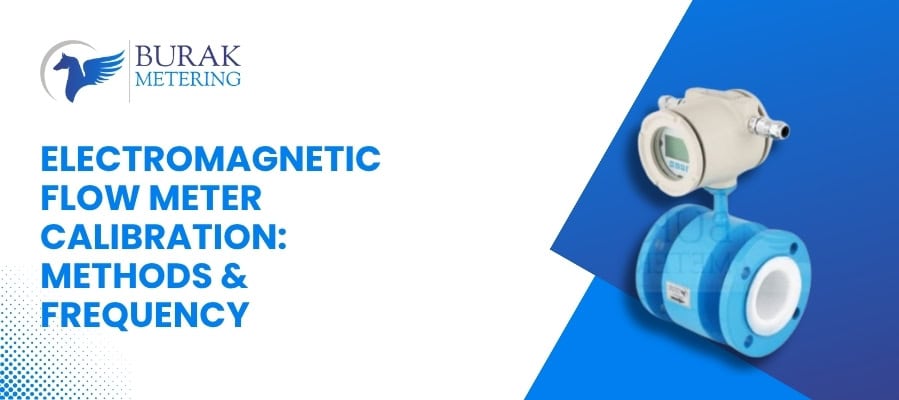 Phone
Phone

Electromagnetic flow meters, also known as magmeters, measure the flow rate of conductive fluids by applying a magnetic field and sensing voltage across electrodes (See electromagnetic flowmeter working principle). Over time, their readings may drift. Calibration restores accuracy.
Below, we explain common calibration methods for electromagnetic flow meters and suggest how often to perform them.
Would you like to learn more about electromagnetic flow meters? Check our complete guide on what electromagnetic flowmeters are and how they work.
Calibration corrects drift in the measurement signal. Drift can result from electrode wear, changes in fluid conductivity, liner aging, or electrical noise. (See common errors and troubleshooting for electromagnetic flowmeters)
Calibration also supports compliance with standards and improves confidence in process control.
If you skip calibration, the mag meter output may deviate from the actual flow. That error may lead to waste, product loss, or safety risk. Routine calibration keeps the flow meter within its stated tolerance.
Here are several calibration methods. Each suits a certain environment or precision level.
In this method, a known volume of fluid passes through the meter. You compare that known value to the meter output.
Wet calibration is often the most trusted method in labs or high-accuracy environments.
You connect the EM test meter in series or parallel with a master (reference) meter. You run a stable flow and record both meter outputs for identical conditions. The difference gives the error. Then apply the correction to the test meter.
This method does not require flowing fluid. Instead, you inject electrical signals (voltage or current) that simulate an expected flow. You then compare the meter response to the simulated value.
Dry calibration works well for sensor electronics or in-situ checks without interrupting flow.
Some modern electromagnetic flow meters include internal diagnostics or coil signature tests. You run these diagnostic routines while the meter remains installed. They flag shifts or anomalies in sensor parameters without removing the meter.
Diagnostic checks help spot issues sooner and may reduce the frequency of full calibration.
You run fluid backward through the sensor and measure output. Or, you use correlation with other sensors (e.g. ultrasonic or turbine meters) to cross-check values. These methods act as verification techniques rather than full calibration.
This is a more specialized method described in the literature for single electrode pairs. It uses the RMS frequency of the induced signal to derive correction factors. (This method is less common in industrial practice.)
Here is a generic step sequence:
Many electromagnetic flow meter manufacturers in india also recommend running diagnostic tests before and after calibration to confirm system health.
Calibration frequency depends on application, stability, and risk level.
Calibration methods for electromagnetic flow meters include wet calibration (gravimetric, volumetric), comparison with a master meter, dry simulation, in-situ diagnostics, and reverse/correlation checks. Each method suits different needs for accuracy, cost, and convenience.
Apply calibration at least yearly, and more often for critical or harsh applications. Always calibrate after installation, repair, or fluid changes. Keep records and monitor drift trends to fine-tune your schedule.
This approach keeps your EMF flow meters accurate, reliable, and trustworthy over their life span.
If you want a reliable EMF supplier, contact the top electromagnetic flow meter manufacturer in India today. We deliver high-quality gas flow meters in India, with full support, and fast responses.
Reach out now to discuss your requirements or get a quote.